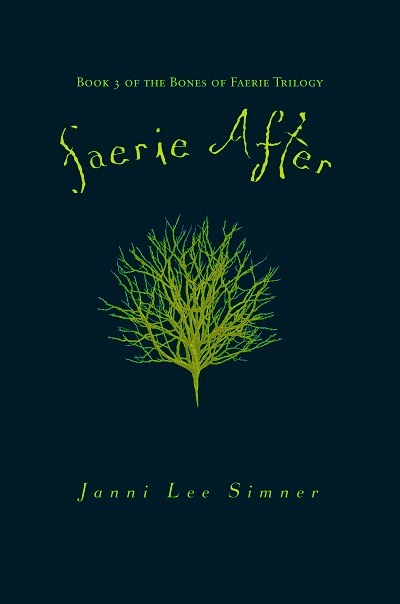What’s a faerie?
When I ask this question, the answers often fall into two categories.
“Tiny winged bodies fluttering among the flowers,” says Juanita Havill, author of Grow: A Novel in Verse, speaking for one camp of faerie readers.
“Magic, glamour, and deep cold danger,” says Sarah Zettel, author of the American Fairy trilogy, speaking for the other.
Flitting nature spirits or inhuman bearers of dangerous magic. These two threads run through much of contemporary faerie fiction. The smaller, flightier faeries might seem the more benign, but even Tinkerbell, one of the most famous representatives of the type, tried to kill Wendy before putting her life on the line to save Peter Pan. Miniature winged faeries are as much associated with fierceness and mischief as with flower appreciation.
R.J. Anderson’s Faery Rebels series is among recent books that pick up on this thread of faerie lore. Anderson’s faeries may be small and winged and living in a tree, but the fierce protagonist of the first book names herself Knife—not the most gentle of names—and spends much of her story searching for weapons and defending her fellow faeries. Even her small stature is ultimately deceptive. It turns out that while in Knife’s community faeries are tiny, that’s because they’ve lost their magic. Most faeries aren’t bound to any one size, but can change as the situation demands.
Faeries don’t even have to be small to fall into the category of fierce mischief-makers. In Gail Carson Levine’s Ella Enchanted, the faerie Lucinda puts the protagonist in mortal danger simply by giving her (and, Lucinda imagines, her parents) the “gift” of unconditional obedience. In Janette Rallison’s My Fair Godmother the stakes aren’t quite that high, but teen faerie godmother-in-training Chrysanthemum Everstar causes trouble enough when she sends high schoolers back to the middle ages in an attempt to provide the protagonist with a prom-worthy prince.
Yet both these gifts-gone-awry are far less dangerous than the offerings of the more inhuman fey who occupy the other strain of faerie fiction, the one partial to glamour and deep cold danger. The faeries in these stories are more akin to the fey of old ballads, able to turn a heart to stone or bind a tongue to truth. When they lead humans astray, they know exactly what they’re doing.
So it is with the Dark Muse in Franny Billingsley’s Chime, who drains life from people through their own creativity. Even more starkly, the faeries of Nancy Werlin’s Extraordinary demand not only the sacrifice of a human life, but that the human in question give up her very sense of self—that she see herself as ordinary rather than extraordinary—before the sacrifice can take place.
On closer examination, though, these simple distinctions—fierce and mischievous faeries versus inhuman and soul-destroying ones—begin to fall apart. In later Faery Rebel books, it turns out that Anderson’s faeries can drain human creativity, too, as a dark flip side to their ability to inspire it, while Werlin’s faeries aren’t so inhuman that they can’t understand friendship, or make sacrifices that save human lives as well as destroying them.
When I began writing my own faerie books, it was initially the cold, dangerous, glamour-wielding faeries I had in mind. The Bones of Faerie trilogy (Bones of Faerie, Faerie Winter, and Faerie After) is set in the aftermath of a war between faeries and humans. That war left behind a world filled with deadly magic: trees that seek human blood, glowing stones that burn with cold light, and forests that can swallow a person whole.
I knew that any faeries willing to bring down an entire world with magic couldn’t be mere mischief-makers. The faeries in my books use glamour to control human thoughts and desires, bind humans into trees, and attempt to turn human hearts (as well as human flesh and bone) into stone, all with barely a qualm.
Yet again it isn’t that simple. Over the course of the trilogy other faeries decide that human lives are worth protecting, even at great cost. The war itself didn’t begin with faerie heartlessness, but with a faerie-human romance, one during which grave mistakes were only made worse by attempts to fix them. Faeries, like humans, are individuals, and they don’t all have the same motives.
As I wrote it became clear to me that faeries and humans are alike in many ways. There are humans in my books who also try to control the thoughts and desires of others (albeit in non-magical ways). The human characters are as capable as making world-shattering mistakes as the fey, too. My protagonist, Liza, makes a few of her own before the end. There’s little a faerie can do, be it inadvertent mischief or cold calculated hurt, that a human isn’t capable of, too. The fey aren’t nearly as inhuman as they seem.
Instead they’re often mirrors—as so much of fantasy is a metaphoric mirror—of human flaws and desires.
Janni Lee Simner is the author of the post-apocalyptic Bones of Faerie trilogy, the Icelandic-saga-based Thief Eyes, four books for younger readers, and more than 30 short stories. Faerie After, the final Bones of Faerie book, comes out this week.










